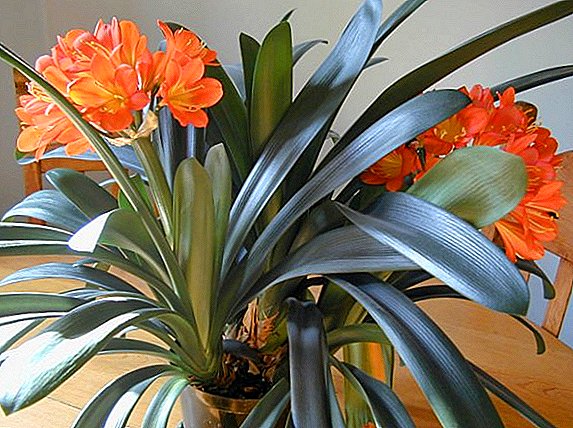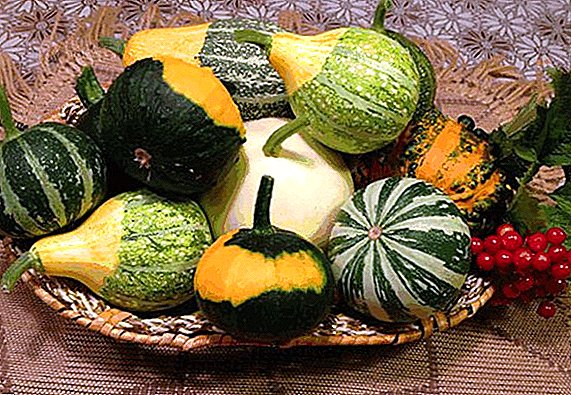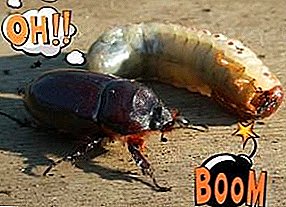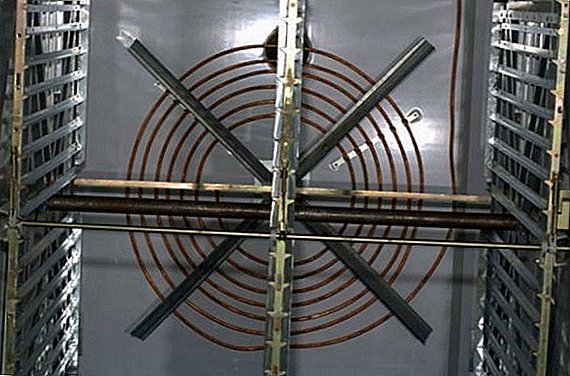 In modern poultry farming without incubators can not do. They not only reduce labor and time costs, but also increase the percentage of hatching of eggs and the yield of healthy chicks. One of the well-known trademarks is IUP-F-45, and we will consider it today.
In modern poultry farming without incubators can not do. They not only reduce labor and time costs, but also increase the percentage of hatching of eggs and the yield of healthy chicks. One of the well-known trademarks is IUP-F-45, and we will consider it today.
Description
IUP-F-45 (universal preliminary incubator) is designed to incubate the eggs of any species of birds bred in agriculture in all countries located in the zone of temperate and tropical climates. This is an incubator of a preliminary type, eggs are in it before hatching.  This equipment is produced by the plant with a 100-year history of Pyatigorskselmash-Don CJSC, which is located in the city of Pyatigorsk of the Stavropol Territory (Russian Federation). The unit consists of 3 chambers of the same size, enclosed in one general building, as well as a mechanism for rotating drums and electrical equipment. Included are 2 process carts.
This equipment is produced by the plant with a 100-year history of Pyatigorskselmash-Don CJSC, which is located in the city of Pyatigorsk of the Stavropol Territory (Russian Federation). The unit consists of 3 chambers of the same size, enclosed in one general building, as well as a mechanism for rotating drums and electrical equipment. Included are 2 process carts.
Read also about the features of such incubators as: "Blitz", "Neptune", "Universal-55", "Layer", "Cinderella", "Stimulus-1000", "IPH 12", "IFH 500", "Nest 100" , Remil 550TsD, Ryabushka 130, Egger 264, Ideal hen.
Key features of this incubator:
- The desired mode is maintained automatically and is under the control of a humidity sensor and 3 temperature sensors.
- The reversible motor rotates the egg trays automatically every hour. So that the trays do not fall out when turning, they are secured with special locks.
- For maintenance, the drums can be installed vertically manually or mechanically.
- A low-speed fan, consisting of 4 blades, circulates air inside each chamber.
- The air in each chamber is heated by 4 electric heaters.
- The air in each chamber is humidified by the evaporation of water, which is supplied to the fan blades during its rotation.
- The air in each chamber is cooled by the water that passes through the radiator.
- For air exchange in each chamber there are openings, closed by throttle valves.
This model of an incubator is very popular not only in the Russian Federation, but also in other countries. It is a reliable and efficient unit that satisfies all consumer needs.  The quality of the brand is the responsibility of the design department, which carried out the modernization of the device in accordance with modern requirements:
The quality of the brand is the responsibility of the design department, which carried out the modernization of the device in accordance with modern requirements:
- wooden panels replaced with plastic sandwich panels;
- instead of wooden cheeks, metal profiles are built in, capable of withstanding more loads;
- it became easier to disinfect the drum;
- drum lock and holders of heaters are covered with a special layer against corrosion;
- installed motor company Motovario (Italy);
- improved air exchange.
Learn how to make the incubator device yourself from the refrigerator.
Specifications
Technical characteristics of the incubator display indicators:
- Weight - 2 950 kg.
- Dimensions - length - 5.24 m, width - 2.6 m, height - 2.11 m.
- Power consumption - 49 kW per 1,000 eggs.
- Installed power - 17 kW.
- The network voltage is 220 V.
- Production material - plastic sandwich panels.
- Warranty - 1 year.
- The term of operation is 15 years.

Production characteristics
The performance of the incubator is characterized by:
- The capacity of chicken eggs on plastic trays is 42,120, on metal - 45,120. (15 040 pieces in each container, 158 in 1 tray).
- The capacity of goose eggs is 18 000 pcs. (60 in 1 tray).
- Capacity of duck eggs - 33,800 pcs. (120 in 1 tray).
- Capacity of quail eggs - 73 000 pcs.
- The yield of healthy young - 87%.
- Exit to incubation mode - 3.9 hours
Important! According to the test report of the Podolsk State Zonal Machine Testing Station (Klimovsk-4, Moscow Region), the incubator slightly exceeded the indicators of the total operational labor intensity - 0,026 h for 1 person at a rate of 0,018 h.
Incubator Functionality
Functional indicators of IUP-F-45 are as follows:
- Temperature controller - 3 sensors. A rise or fall in temperature to a critical level is accompanied by a red color of the detector and a sound effect.
- Humidity controller - 1 sensor. When the humidity level drops or rises to a critical level, the orange color lights up, the soundtrack is turned on.
- Display - the user manages the control through the computer, the display is installed on the device, where the performance indicators are displayed.
- The electronic unit - for automatic operation of the incubator.
- Signaling - reports faults in the form of sound effect and change the color of the light bulb.
- Ventilation - 3 fans.
- Battery - in the case of disconnection from the network, you need to use a diesel or gasoline generator for 5-7 kW, a normal 12-volt car battery and an inverter that converts the voltage will keep the incubator for almost 25 minutes.

Advantages and disadvantages
The equipment has such advantages:
- ease of use;
- reliability;
- high efficiency;
- it is possible to fill an incubator both once and in stages;
- A large number of eggs for incubation.
Disadvantages of this type of incubator:
- with incomplete loading may increase electricity consumption;
- throttle valves often fail;
- no emergency situations are foreseen;
- uneconomical water consumption for cooling;
- uneven distribution of heat, located in the center of the fan eggs must be turned more often to evenly blown;
- high price;
- large size and weight that hamper transportation.
Read more about how to choose the right incubator for your home.
Instructions on the use of equipment
The process of operating the incubator includes:
- his training;
- laying eggs;
- the incubation process;
- hatching chicks.

Incubation technology involves the following sequence:
- Getting eggs, their calibration.
- Bookmark in trays.
- Treatment disinfection.
- Layout in the incubator.
- The process of incubation.
- Move to pin.
- Conclusion.
- Sort chicks.
- Place in a brooder.
- Treatment.
- Vaccinations.
- Sending chicks to breed.
- Sanitary processing equipment and premises.
Did you know? An Australian hen lives in Australia, the male of which builds an incubator in the sand, and after the female has laid eggs and covered them with sand, it controls the required temperature level with its beak. If necessary, the male brings more sand.
Preparing the incubator for work
Preparation of IUP-F-45 for work includes:
- Checking the correct installation of all parts and the device itself in relation to the walls.
- Checking the operation of the device by loading empty trays and turning the drum in manual mode.
- Filling water tanks.
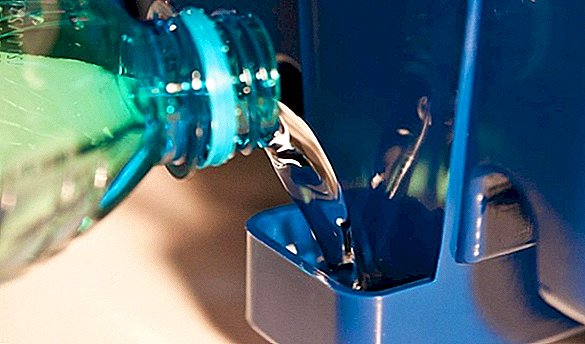
- Installation of meters.
- Lubrication of bearings and oil filling.
- Check belt tension V-belt transmission.
- The inclusion of the device in the network and test work.
- Installing the timer disc and casing.
- Switch to automatic mode.
- Check the moisture system.
- Grounding check
Important! Water temperature in the humidification system should not exceed +16 °C, and its feed rate should be 2-3 drops per second.
Egg laying
There are 3 ways to lay eggs:
- Simultaneous filling of all chambers of an incubator on 17 trays for 1 tab. The interval between the first 6 bookmarks is 3 days, between 6 and 7 - 4 days. Trays spread with a gap, skipping 2 tiers. After 20 days, the first batch is sent to IUV-F-15 for withdrawal.
- The chambers of the incubator alternately fill 52 trays per layout into 1 chamber, having trays with a pass in 1 tier. After the trays are installed in camera 3, 52 trays are placed in them again one after the other. The second tab in 1 cell will be under 1 for 10 days.
- The entire incubator is filled at the same time. With this method, do not forget that you will need an incubator to output the appropriate capacity.

Basic requirements for laying eggs:
- Trays set in chambers with equal intervals.
- The drum is filled with trays at 100%.
- The interval of bookmarks with the first 2 ways must be observed strictly.
- In 1 incubator must be eggs 1 species of bird.
Laying eggs is as follows:
- They are grouped into small, medium and large, and lay in different chambers or alternately in 1.
- Eggs are laid horizontally and vertically with a blunt end up staggered.
- If duck eggs are large, they are laid down.
- Goose eggs lay on its side.
- Small eggs are laid in length, medium - across the width of the tray.
- To ensure proper stacking, put the tray on the table, lifting from the opposite end to the elevation.
- In the last row, the laying direction is changed to reinforce the layout.
- In case of incomplete filling, the filled rows are fenced off with a wooden partition.
- For each tray attach a label indicating the number of eggs, their supplier, the date of commencement of incubation, the breed of birds.
- Trays set on carts.
Important! Do not fix the eggs in trays with paper or tow, this will lead to the fact that the warm air can not heat them from all sides.
The sequence of laying eggs in 1 chamber with an interval of 4-6 hours:
- Large.
- Average.
- Small.
Incubation
If the incubation takes place by filling in 17 trays of all chambers or 52 in 1 chamber, then:
- In the first decade, the temperature is set at +37.7 ° C, then lowered to +37.4 ° C.
- The humidity sensor in the first decade is set at +30 ° C, then lowered to +28.5 ° C.
- In the first decade, throttle valves are opened by 8-10 mm, then by 25 mm. On the ceiling increase from 4 mm to 15 mm.

If the method of simultaneous filling of the incubator is chosen, then:
- The temperature in the first 10 days is set at + 37.8-38 ° С, in the next 8 days it is lowered to + 37.2-37.4 ° С, then the eggs are sent for withdrawal.
- Humidity is set in the first 10 days at the level of 64-68%, in the next 6 days is reduced to 52-55%, then - to 46-48%.
- The ventilation flaps open in the first 10 days by 15-20 mm, in the next 6 days - by 25-30 mm, then - by 30-35 mm.
Hatching chicks
After 19 days from the start of egg laying, it is necessary to transfer to the IUV-F-15 hatchery incubator. At the same time, the control batch of eggs shines through and discards those with frozen embryos. If a large percentage of frozen embryos are detected in the control lot, then the whole lot will be translucent. If the percentage is satisfactory, the bookmark is transferred entirely.  After about 70% of the chicks hatch, they are sampled in boxes. Juveniles are divided into condition, substandard, underdeveloped, the latter disposed of. Then they are divided into females and males, irradiated with ultraviolet light so that they do not suffer from vitamin D deficiency. After the deadlines for hatching, the chicks are removed from the incubator a second time and the same procedures are performed.
After about 70% of the chicks hatch, they are sampled in boxes. Juveniles are divided into condition, substandard, underdeveloped, the latter disposed of. Then they are divided into females and males, irradiated with ultraviolet light so that they do not suffer from vitamin D deficiency. After the deadlines for hatching, the chicks are removed from the incubator a second time and the same procedures are performed.
Did you know? On the island of Sulawesi live chickens that do not hatch eggs, and lay them in sand incubators. Chicks hatch and grow independently, without parents.
Device price
In Russia, the new IUP-F-45 is sold at a price of 1,300,000 rubles, which is equivalent to UAH 547,150, or $ 20,800. USA. The incubator in the used state can be purchased from 300,000 rubles. or 126 200 UAH or 4 800 dollars. USA.
findings
Reviews about IUP-F-45 indicate that for old-fashioned premises such machines are better suited to foreign ones, since they have a different ventilation system, walls, and floor. In many farms, apparatuses have been standing for many years without replacement, with only a small reconstruction. However, it becomes more difficult for them to cope with the heat given off by future chicks.  The same high performance, but with greater hatchability and efficiency with Western manufacturers Pas Reform (Netherlands), Petersime (Belgium), HatchTech (Netherlands), Jamesway (Canada) and Chick Master (USA), however, their cost is higher. Ukrainian manufacturers offer an analogue of INCI-21t, the Russian company NPF Seveks also competes with IUP-F-45.
The same high performance, but with greater hatchability and efficiency with Western manufacturers Pas Reform (Netherlands), Petersime (Belgium), HatchTech (Netherlands), Jamesway (Canada) and Chick Master (USA), however, their cost is higher. Ukrainian manufacturers offer an analogue of INCI-21t, the Russian company NPF Seveks also competes with IUP-F-45.
Thus, the main advantage of IUP-F-45 is the availability and absence of difficulties in work. However, the current economic conditions bring to the fore the demand for resource savings, which does not differ from this incubator. Foreign, more expensive counterparts in this regard have made a long way forward, so farmers expect improvements in the operation of the apparatus produced in Russia.



